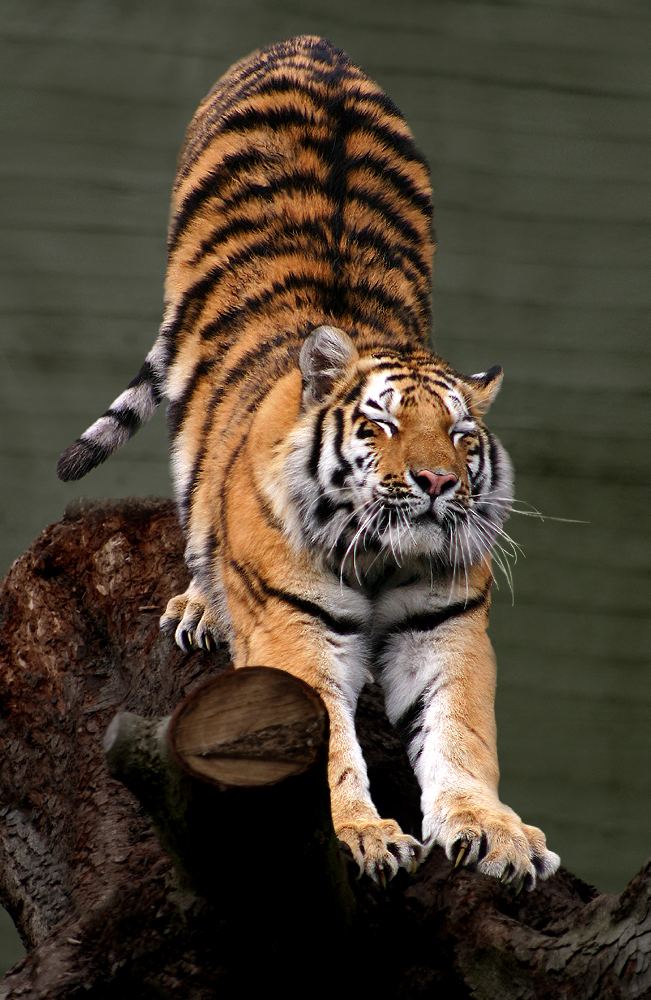 | ||
Stretching is a form of physical exercise in which a specific muscle or tendon (or muscle group) is deliberately flexed or stretched in order to improve the muscle's felt elasticity and achieve comfortable muscle tone. The result is a feeling of increased muscle control, flexibility, and range of motion. Stretching is also used therapeutically to alleviate cramps.
Contents
In its most basic form, stretching is a natural and instinctive activity; it is performed by humans and many other animals. It can be accompanied by yawning. Stretching often occurs instinctively after waking from sleep, after long periods of inactivity, or after exiting confined spaces and areas.
Increasing flexibility through stretching is one of the basic tenets of physical fitness. It is common for athletes to stretch before and after exercise in an attempt to reduce risk of injury and increase performance, though these practices are not always based on scientific evidence of effectiveness.
Stretching can be dangerous when performed incorrectly. There are many techniques for stretching in general, but depending on which muscle group is being stretched, some techniques may be ineffective or detrimental, even to the point of causing tears, hypermobility, instability, or permanent damage to the tendons, ligaments, and muscle fiber. The physiological nature of stretching and theories about the effect of various techniques are therefore subject to heavy inquiry.
Although stretching is part of some warm-up routines, a study in 2013 indicates that it weakens muscles in that situation.
Physiology
Studies have shed light on the function, in stretching, of a large protein within the myofibrils of skeletal muscles named titin. A study performed by Magid and Law demonstrated that the origin of passive muscle tension (which occurs during stretching) is actually within the myofibrils, not extracellularly as had previously been supposed. Due to neurological safeguards against injury, it is normally impossible for adults to stretch most muscle groups to their fullest length without training due to the activation of muscle antagonists as the muscle reaches the limit of its normal range of motion.
Types of stretches
There are four different types of stretching: ballistic, dynamic, SMF stretching, PNF stretching, and static stretching. Ballistic stretching is a rapid bouncing stretch in which a body part is moving with momentum that stretches the muscles to a maximum. Muscles respond to this type of stretching by contracting to protect itself from over extending. Dynamic stretching is a walking or movement stretch. By performing slow controlled movements through full range of motion, a person reduces risk of injury. Proprioceptive neuromuscular facilitation (PNF) is a type of stretch for a particular muscle and its specific job, so resistance should be applied, then the muscle should be relaxed. Static stretching is a type of stretch whereby a person stretches the muscle until a gentle tension is felt and then holds the stretch for thirty seconds or until a muscle release is felt, without any movement or bouncing.
Effectiveness
Although many people engage in stretching before or after exercise, the medical evidence has shown this has no meaningful benefit in preventing muscle soreness.
Stretching does not appear to reduce the risk of injury during exercise, except perhaps for runners. There is some evidence that pre-exercise stretching may increase athletes' range of movement.
Flexibility
Some people are more flexible than others as defined by individual body flexibility score; this includes sex differences where females are generally more flexible than males.
